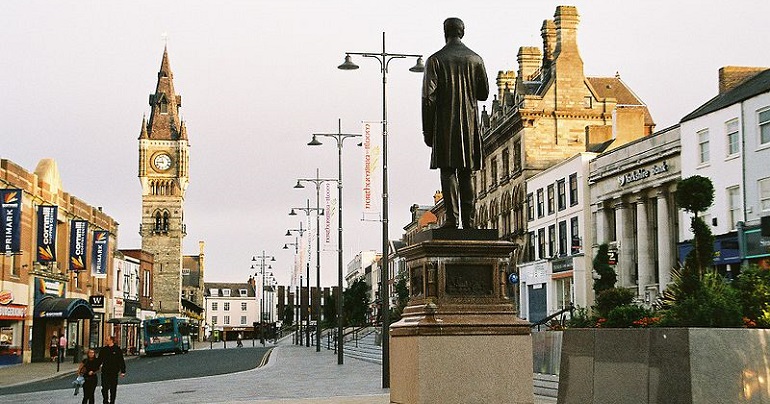Green Party local election preview: North East
Local elections are right around the corner. Thousands of new councillors are set to enter local government in England and the north of Ireland. Nearly 200 Greens are currently elected to local authorities across the UK. On May 2, both the Green Party of England and Wales and the Green Party in Northern Ireland are hoping to add to their tally.
Bright Green is taking a look at some of the most interesting races for the Greens – highlighting the candidates, reviewing the campaigns, and previewing what could happen on polling day.
Next up in our previews is the North East.
Sand dancers

The North East of England is unique in England for keeping hold of its local nick names. People from Newcastle are Geordies. If you’re from Hartlepool, unfortunately you’re a Monkey Hanger. Grew up in Sunderland? A Mackem.
But for our preview we’re most interested in the Sand Dancers – the demonym for people from South Shields. Because in South Shields, the Greens have perhaps their best chance of breaking onto a new council in the North East of England.
Beacon and Bents ward will elect one councillor this year to South Tynside Borough Council. The ward is bordered by the North Sea to the east, and to the River Tyne to the north and west. It is here that the Greens are hopeful to pick up a seat. In 2018, the Greens produced a stunning result – coming a very strong second and receiving 39% of the vote. The party had not stood in the ward in the previous election just two years prior.
This year, the Greens are hopeful of converting that strong showing into victory. With a small swing, the Greens could win their first seat on South Tynside Council, an authority that currently has 53 Labour councillors and one Tory. In doing so, the Greens would not only build strength in a region with scant Green representation, but also break the Labour domination of the council – domination which is common in this part of the country.
On the Yorkshire border

Further south, the Greens are also eyeing up another council they could break onto. The town is Darlington – the largest town in County Durham. Like many English towns, its history is heavily influenced by the Quakers. Much of its iconic architecture was built through financing or gifts from 19th century Quaker philanthropists. Among those rich benefactors to the town was Elizabeth Pease Nichol, an important figure in both the suffragist and slavery abolition movements.
Today the Greens are hoping to channel the spirit of the town’s radical history in order to break onto the council. In 2015, the party picked up the third highest vote share across the town, but failed to win any seats. Four years on, things look promising, with College Ward candidate Matthew Snedker fighting to win in College ward.
If successful, Snedker would boot a Tory out of office. He’s helped by the fact that only one sitting councillor in the ward are restanding, and by being the main challenger from the left. While Labour currently hold a majority on the council, the Tories have a strong group of 16 councillors in opposition. Getting a Green in the room this year won’t only provide more and better accountability for the Labour administration. It will also help reduce the influence of the Tories in one of the few places they have a foothold in the North East.
This article originally stated that the Green candidate in College ward, Darlington was Michael Snedker. This was corrected to Matthew Snedker at 12:58 May 2. The article has also been corrected to state that one of the sitting councillors in the ward is re-standing. The article originally claimed that both sitting councillors were not standing for re-election.




Tanks for including Darlington in this.
A couple of corrections: the College ward candidate is called Matthew Snedker (and we have Bryony Holroyd standing there too), and one of the two Tory Councillors is standing again.
Thanks Mike. Apologies for the errors! We’re currently putting out a huge amount of content on the elections, so please forgive us the occasional mistake!